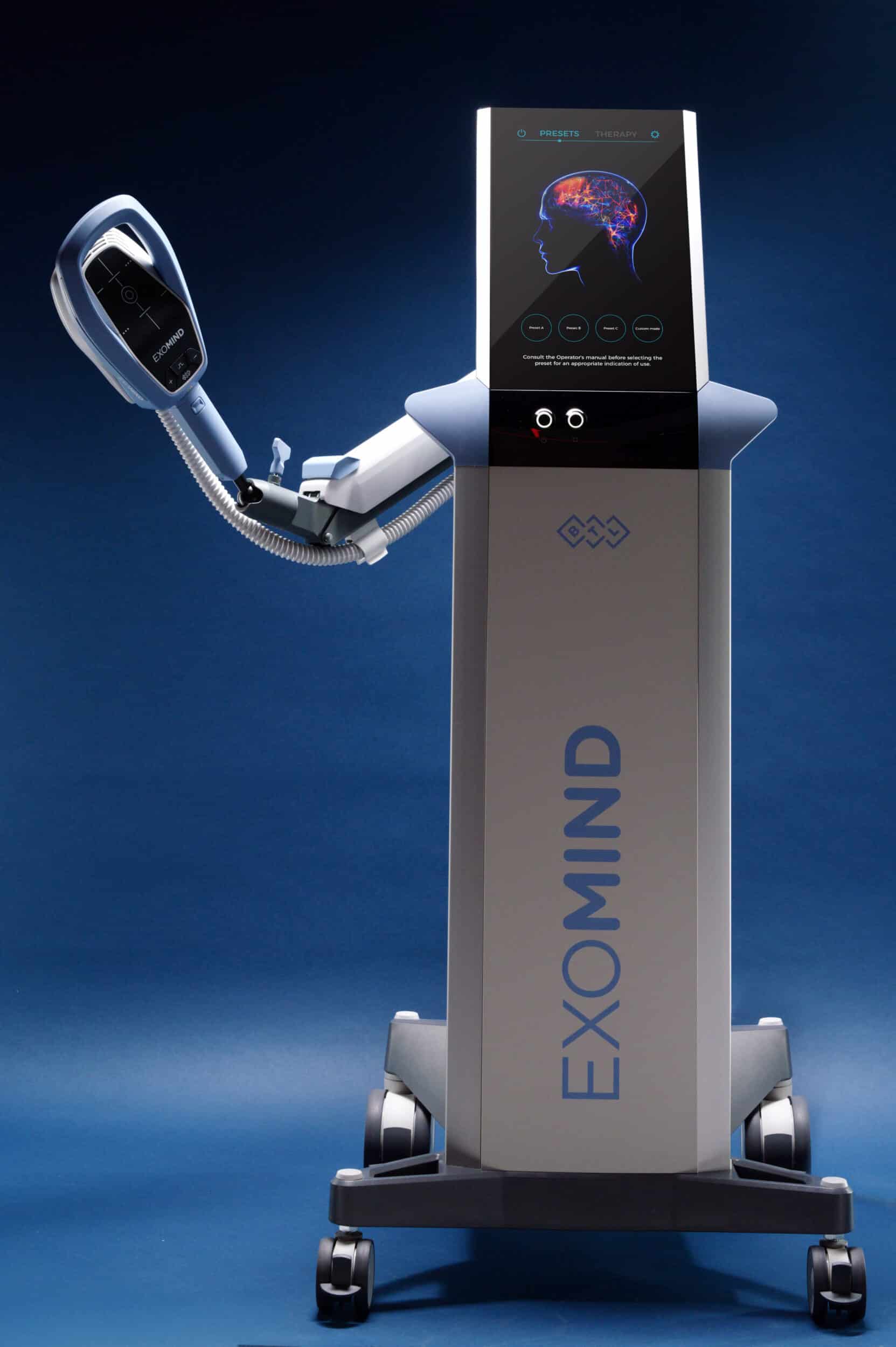What is EXOMIND therapy?
EXOMIND™ is a revolutionary, noninvasive, and drug-free mental wellness therapy designed to treat symptoms of depression. It is a walk-in, walk-out procedure that helps patients regain emotional balance and improve their quality of life.
How does it work?
EXOMIND uses FDA-cleared ExoTMS™ technology to stimulate specific areas of the brain responsible for emotional regulation, cognitive function, and self-control. This stimulation reactivates neural pathways, restoring healthy brain activity and improving neural connectivity.
What are the benefits of EXOMIND?
Unlike traditional antidepressant medications, EXOMIND’s rTMS (repetitive Transcranial Magnetic Stimulation) treatment is noninvasive and does not cause common side effects such as weight gain or sexual dysfunction.

Is EXOMIND right for me?
EXOMIND is intended for individuals suffering from depression. Speak with your healthcare provider to determine if this therapy is suitable for your personal mental health needs.
How many sessions are required?
A typical course of rTMS therapy involves multiple sessions. The treatment plan, including the number of sessions, should be discussed with your physician. Since the effects of rTMS are temporary, follow-up treatments or additional therapies may be necessary to prevent relapse.
What does the therapy feel like?
During an EXOMIND session, you will lie down comfortably while the applicator is positioned on your head. Patients often report a tapping or tingling sensation similar to a head massage. You may resume normal activities immediately afterward. Some may experience a mild headache, which usually subsides within minutes.
Does it hurt?
Most patients describe the therapy as comfortable. Sessions last less than 30 minutes, making it a convenient, walk-in/walk-out procedure.
Will it disrupt my daily life?
EXOMIND is designed to easily integrate into your everyday routine with minimal disruption.
What are the risks?
While EXOMIND is generally well tolerated, some patients may experience side effects such as headache, scalp discomfort, hypomania, or, rarely, seizures. Always consult your healthcare provider about potential risks and contraindications before starting therapy.
What if I feel discomfort during therapy?
If discomfort occurs (e.g., finger twitching), pause the session and adjust the applicator’s position slightly (by 0.2 in / 0.5 cm increments, up to 0.6 in / 1.5 cm). If discomfort persists, the therapy intensity can be reduced.
How long do results last?
Clinical reports suggest benefits from rTMS therapy may last up to 12 months. However, ongoing monitoring and possible continuation of antidepressant medications may be needed depending on the patient’s condition.
Are there alternative treatments?
Yes. Other treatment options include medication, psychotherapy, and electroconvulsive therapy. Discuss these with your doctor to determine the best fit for your needs.

